When Private School Subsidies Hollow Out the Public: Japan's Tuition Reform Risks and Remedies
Input
Modified
Private school subsidies risk emptying public schools by erasing price differences Competition will shift to entrance exams and prep, as Korea shows Link subsidies to fair admissions and fee caps, invest in public quality, and track enrolment
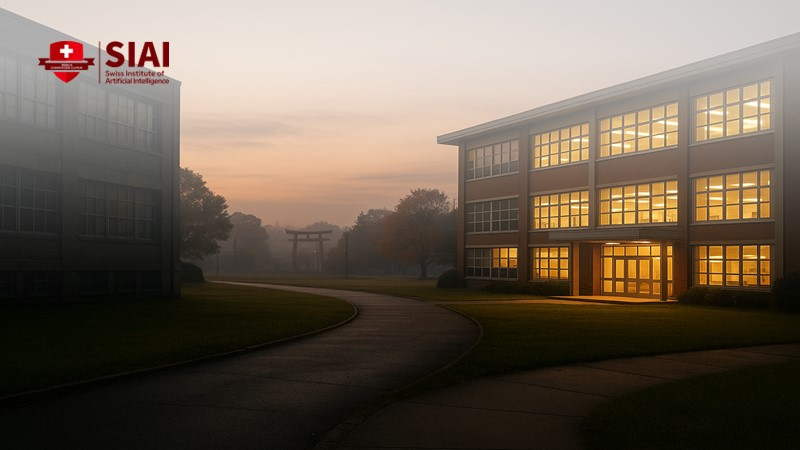
Japan is about to face a harsh reality regarding private school subsidies. This spring in Osaka, the average application ratio for public high schools dropped to 1.02 applicants per seat. At least one prefectural high school closed its doors as free tuition for private high schools became available locally, and interest in those options increased. National policy will now expand that model: starting in 2026, the government will eliminate income caps and raise the private school subsidy limit to $2,960 per student, roughly the average national tuition. Public high schools are already tuition-free. Families will celebrate the financial relief. However, a simple truth exists beneath the surface: when private school costs drop to match public school prices, demand shifts. The competition bottleneck moves down to admissions exams, while public schools lose students, prestige, and eventually staff and programs. This loss of students and staff can significantly impact the quality of education in public schools, risking turning equal access into empty classrooms.
The new private school subsidies alter the choices available
The reform changes the incentives. Nationwide, about 35% of upper-secondary students already attend private schools, with over half in Tokyo, showing strong urban preferences. High school attendance is nearly universal at about 98%, so even small changes in preferences can affect thousands of students. Suppose private school subsidies eliminate the price difference. In that case, families who previously chose public schools for cost considerations can now select private schools that offer smaller class sizes, unique programs, or better university pathways. Osaka, which tested universal free tuition for both public and private sectors, illustrates the potential future: public high school applications fell to record lows; some schools lost enough students to close; and competition for private school admissions increased. Tokyo's earlier decision to eliminate income caps on private tuition support also pressured earlier admission cycles, including junior high school and cram schools. These are precisely the downstream effects Japan should expect without proper checks.
The mechanics are simple. Private tuition is the visible cost; families also consider admissions chances, travel times, school reputation, extracurricular options, and peer influences. The 2026 reform reduces the visible cost for many private schools to nearly zero, without affecting other fees such as admissions, facility charges, uniforms, and materials, which can each exceed $1,294. Families who can afford those extras will seek out selective schools. In contrast, others will rely on tutoring and test preparation to remain competitive. Public schools, on the other hand, face a double threat: they seem "free but generic," and they lose the high-achieving students whose test scores and extracurricular achievements boost a school's reputation. In Osaka, principals have already observed that families heavily weigh facilities and appearances when comparing schools—areas where public schools struggle to compete without targeted investment. The outcome is a subtle selection process based on admissions rather than posted prices.

Korea's lesson: private school subsidies do not reduce competition—they increase it.
Japan is not the first country to face this issue. South Korea expanded free high school education nationwide by 2021, but private tutoring and competitive school admissions did not diminish. In 2023, Korean families spent ₩27.1 trillion (around US$20–21 billion) on private education, a 4.5% increase from 2022, with an average monthly expenditure per student of $299. By 2025, that total reached $20.0 billion. The government covered school fees, but families continued to pay for advantages. The pattern is clear: when basic schooling is free across both sectors, competition shifts to the margins, such as admissions prep, language courses, essay coaching, and test strategies. Free tuition lowers the barriers to entering the competition but does not eliminate them.
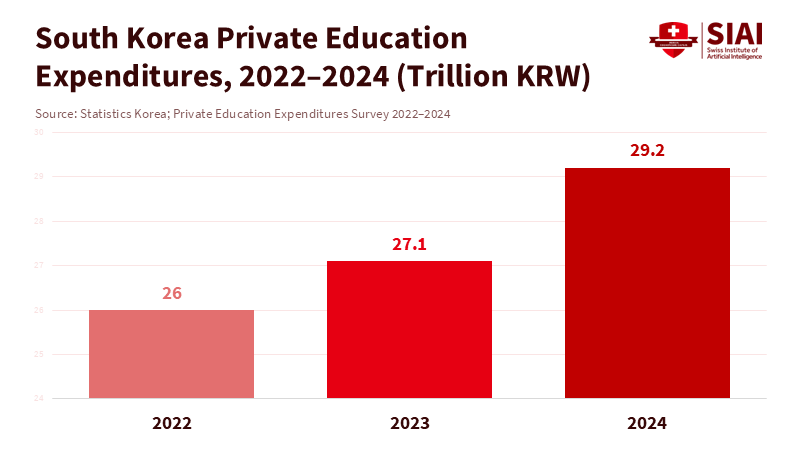
Korea also has experience with attempts at policy equalization. Previous "equalization" reforms replaced some competitive entrance exams with random assignments. They provided subsidies while imposing stricter rules on private schools. Yet, the private education market adapted and continued to grow, fueled by university admission pressures and job market advantages. Recent government efforts to remove difficult questions from the college entrance exam recognize this pressure, but the tutoring industry remains strong. For Japan, the takeaway is clear: if admission bottlenecks and signaling markets stay in place, private school subsidies increase access to the competition more than they equalize it. The focus shifts from tuition to preparation. This shift in focus can potentially increase inequality, as families with more resources can afford better preparation, while others may struggle. Public schools can decline even as policies claim to promote fairness.
Designing private school subsidies without weakening the public sector
Japan has the opportunity to shape these incentives in a way that preserves the integrity of its education system. The first step is to tie private school subsidies to admission rules that ensure fair access. This involves prohibiting fee-based priority, mandating clear admissions criteria, and, in cases of oversubscription, enforcing lotteries or publicly reviewed composite indices to minimize manipulation. In regions like Tokyo and Osaka, where private school demand is particularly high, transparency in admissions should be a prerequisite for receiving additional subsidies. This approach doesn't eliminate selectivity but prevents an arms race that could turn subsidies into de facto financial advantages for families with more resources for test prep. These strategic policy adjustments offer hope for a more equitable education landscape in Japan.
Second, regulate non-tuition fees. The central subsidy now covers a large portion of private tuition (up to $2,960). Still, admission and facility fees, uniforms, and materials can be substantial and unclear. Limit increases in these fees for participating private schools and publish standard fee schedules so families can compare real costs. Tokyo's 2024 strategy, which removed income caps for private tuition support, should be combined with fee oversight to prevent providers from raising prices alongside new subsidies. The goal is to avoid a "whack-a-mole" scenario where subsidies chase and normalize higher prices.
Third, it's crucial to invest in public school quality visibly. The Osaka case underscores that parents often consider facilities and branding when comparing schools. By allocating part of the national budget to upgrading public school facilities, modernizing labs, and implementing targeted programs in areas such as international studies, engineering, and healthcare—fields with apparent job-market demand—Japan can enhance the prestige of its public schools. By funding teacher time for project-based learning, industry partnerships, and language programs that match elite private offerings, Japan can further boost the reputation of its public schools. This strategic investment can alleviate teacher workloads by funding additional staff in large classes or areas with high needs. If public teachers have time for support and enrichment, families will take notice. This emphasis on public school investment offers reassurance about the potential for improvement in public education in Japan.
Finally, track choices using real-time data. Establish an annual "enrollment pressure index" that monitors under-enrollment in public schools, oversubscription in private ones, cram-school intensity, and household spending on education by region. Publish this index each spring and adjust subsidy conditions if public under-enrollment continues. The index can use existing MEXT and household spending surveys, along with prefectural admissions data. If the policy aims for fairness, it should be guided by evidence, not slogans.
What this means for educators and policymakers
Educators should prepare for intense competition during junior high and even elementary transitions, especially in greater Tokyo and Kansai. Anticipate strong demand for exam preparation and language programs aligned with elite private schools. Public schools can compete by focusing on unique offerings, visible counseling support, and partnerships that provide internships and certifications. School leaders should promote these strengths, not just test scores. In areas facing under-enrollment, consolidation will occur; staff should receive support during transitions, including retraining and job-placement guarantees.
Policymakers should act quickly to establish standards. Make private school subsidies conditional on fair admissions and fee management in 2026, rather than waiting for problems to arise. Fund a public school improvement package that addresses the aspects parents notice and the support students require: updated facilities, specializations tied to local industries, and reduced teacher workloads. Use Osaka's experience as an early warning indicator, and view Tokyo's fee structure as a live experiment: when income caps are removed, monitor non-tuition fees, admission ratios, and public school capacity closely. Japan's PISA results are strong; the challenge is not average learning but disparities under fiscal pressure. The reform should narrow gaps, not widen them.
Osaka's 1.02 public school application ratio serves as a warning. When private school subsidies erase tuition differences, families choose private schools, shifting the focus to admissions and additional offerings. Japan's national reform, with its $2,960 cap for private tuition support and universal eligibility, can reduce family burdens. However, without fair admissions, fee oversight, and a strong push for public quality, public schools will lose students and prestige. Korea's experience shows that competition adapts: free tuition did not cool the race, and private spending reached new heights. Suppose we want genuine equal opportunity, not just a claim. In that case, we must design the policy to protect the public mission now. Make private subsidies contingent on clear rules, invest in the public sector's strengths, track data, and make adjustments. Otherwise, we will find quiet hallways in public schools and increased pressure in private ones, ironically funded by a policy intended to support all families.
The views expressed in this article are those of the author(s) and do not necessarily reflect the official position of the Swiss Institute of Artificial Intelligence (SIAI) or its affiliates.
References
East Asia Forum. (2025, November 13). Japan's equal educational opportunity faces funding dilemma.
Japan Times. (2023, December 6). Tokyo aims to make high school tuition free of charge for all.
Kyodo News. (2025, June 19). FOCUS: Japan's free high school policy may provoke exodus from public schools.
MEXT (Ministry of Education, Culture, Sports, Science and Technology). (2025, April). Tuition Support for High School Students (FY2025 edition).
MEXT / NIAD-QE. (2024, January 11). MEXT releases the results of the FY2023 School Basic Survey.
News On Japan. (2025, April 4). Japan's tuition-free high school program expanded nationwide.
OECD. (2023). PISA 2022 Results—Country Note: Japan.
OECD. (2024). Education at a Glance 2024—Japan Country Note.
Statistics Korea. (2024, March 14). Private Education Expenditures Survey (2023).
TIMSS 2023. (2024). Japan: Education Context—Private school enrolment shares.




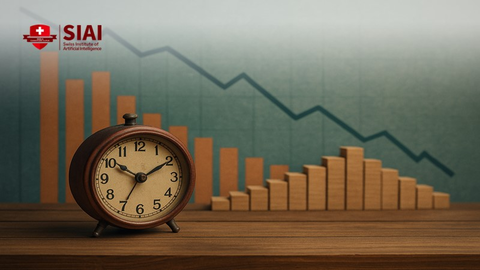


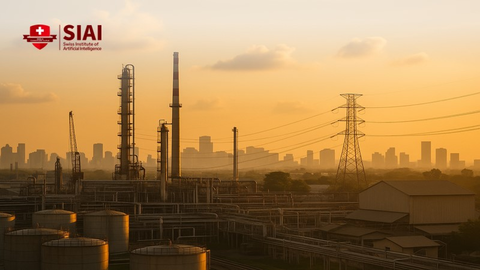
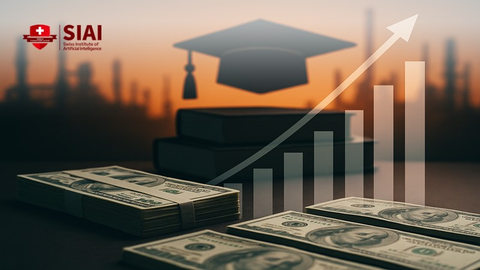













Comment